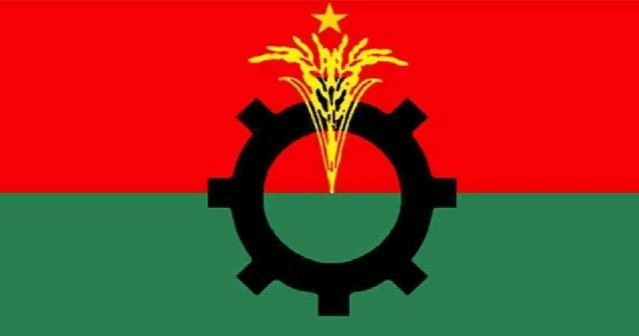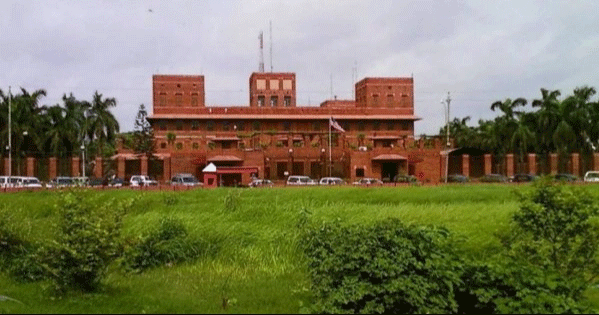Banks fail to provide money as per demand
Zarif Mahmud: Due to weakness, the banking sector has lost the ability to provide money according to the needs of the economy. Along with the dollar crisis, the money crisis is also increasing in the banks. As a result, banks are not able to provide loans to entrepreneurs of the public and private sectors according to the needs of the economy. This has led to a contraction in economic activity as well as a disaster in the manufacturing sector. Although the public and private sectors have not taken loans as per the target, the liquidity crisis in the banks has become evident.
According to the report of the Central Bank, the government’s target of borrowing from the banking sector in the current financial year was Tk 1 lakh 32 thousand 395 crores. About Tk 24,970 crore taken from last July to February. Which is 5.30 times less than the target. At the same time, the target of borrowing from the non-banking sector was Tk 23,000 crore. Tk 11,207 crore taken from July to February. 2 times less than target. The non-bank sector took loans by selling savings bonds, treasury bills and treasury bonds. The total borrowing target was Tk 1 lakh 55 thousand 395 crore. Tk 36,177 crore has been taken till February. Which is 4.30 times less than the target.
The target of increasing credit flow to the private sector was 10.90 percent till last December of the current financial year. 5.11 percent has been achieved till then. Which is less than half of the target. The target is to increase credit flow to the sector by 11 percent by June. It has increased by 7.07 percent till March. Which is about 4 percent less than the target.
Even though the government and private sector have borrowed less than the target, the banking sector is now suffering from a cash crunch. Due to liquidity crisis, the private sector is unable to provide credit as per the demand.
Meanwhile, the entrepreneurs also do not want to take new loans due to the economic instability, the dollar crisis, the increase in loan interest rates. As a result, economic activity is shrinking. As production is falling, so is the pace of new employment. In December last year, total liquidity in banks was Tk 4 lakh 33 thousand crores. In March, it increased slightly to Tk 4 lakh 38 thousand crore. In 3 months, the liquidity has increased by only Tk 5 thousand crores. But banks disbursed loans more than collected deposits. Besides, disbursed loans can’t be collected. Due to increase in non-performing loans and risky assets in other sectors, money is stuck in the provision sector of banks. At the same time, the income from disbursed loans and capital of banks has decreased. Due to which the flow of cash in banks has decreased. Due to this, the banks are becoming financially weak.
In this context, the former governor of the central bank Salehuddin Ahmed said that due to the weakening of the banking sector, it is not able to supply dollars and money according to the demand in the economy. When the reserve was high, the government played various games with it. Invested in various sectors, gave loans. But reserves are for use in emergencies. When the danger came, it could not last even 3 months with so much reserve. Reserve began to strain. which is still going on. The central bank needs to be tough on the banking sector. There should be no more concessions on political grounds. But still being given.
In a recent event, the executive director of CPD Fahmida Khatun said the central bank has lost its independence in decision-making. Because of which the banks have become weak. Now the economy is not able to provide money according to the demand.
It can be seen from the report of the central bank, the deposit flow of the banks has increased by 9.98 percent in July-March of the current financial year. At the same time, credit flows increased by 11.14 percent. That is, banks have distributed more loans than average deposits. But banks can’t disburse the entire deposit as loan. Conventional banks can disburse 83 percent of total deposits. The remaining 17 percent has to be deposited in the central bank as statutory deposit. 9.5 percent of the total deposits of Islamic banks have to be kept in the central bank. The remaining 89 percent can invest. But the banks invested an average of 78.08 percent. That is, banks should have investable funds. Still, many banks are unable to maintain statutory deposits with the central bank. For this, every day the Central Bank and the call moneymarket are taking short and long term loans from one bank to another.
Banks deposit money with the central bank at a higher rate. Because in case of danger, they can bring money to meet the needs. In recent times, the central bank deposits of banks have decreased. In June 2022, the amount of deposits of central bank commercial banks was Tk 91 thousand crores. In June of the last financial year, it decreased to Tk 72 thousand crores. In March, it further decreased to Tk 66 thousand crore. However, commercial banks are supposed to deposit Tk 2 lakh 71 thousand crore with the central bank as statutory deposits. Tk 4 lakh 38 thousand crores are deposited. More than demand, there are deposits. Against those funds, commercial banks receive special liquidity support from the central bank.
A large chunk of banks’ profits are trapped by increasing defaulted loans and risky assets. In September 2021, the default was Tk 1 lakh crore. Last December it increased to Tk 1.5 lakh crore. In 2 years and 3 months, defaulted loans increased by about Tk 50 thousand crores. In the same period, the provision reserve has increased from Tk 66,000 crore to Tk 81,000 crore. Even before Corona, the central bank was giving special concessions for loan repayment. It has increased during Corona. Due to the global recession, debt repayments were exempt until last year. As a result, the banks’ loan collection has not increased so far. As a result, cash income has decreased.
Besides, banks are not able to do foreign trade due to dollar crisis. As a result, this sector is deprived of income. Besides, cash is getting stuck while buying dollars from the central bank to meet import expenses. In the financial year 2021-22, the central bank sold dollars from the reserve to commercial banks amounting to $7.6 billion. The average price of the dollar at that time was Tk 92. According to this, about Tk 70 thousand crore have gone from the bank to the central bank. In the fiscal year 2022-23, it sold $1,357 million. At that time, the average dollar price was Tk 107. According to this, Tk 1 lakh 45 thousand crores went to the central bank. It has sold $ 1,170 million till April of the current financial year. At that time the average price of dollar was Tk 110. According to this, Tk 1 lakh 29 thousand crore have gone from the commercial banks to the central bank. Because of this, the liquidity crisis in the bank has increased. However, a part of these funds is being provided to commercial banks from the central bank under special liquidity support.
The central bank is following a contractionary monetary policy to control rising inflation. As a result, the loan interest rate almost doubled. Due to this, the flow of credit has decreased. At the same time, the central bank is also reducing the flow of money in the market. In July-March of the last financial year, the flow of money in the market increased by Tk 71 thousand crores. Tk 50 thousand crores increased during the same period of the current financial year. That is, the flow of money has decreased by Tk 20 thousand crores during that time. The liquidity crisis in banks has increased due to these multifaceted reasons. Due to this crisis, the capacity of the banks has also decreased.
President Joe Biden tests positive for COVID-19 while campaigning in Las Vegas, has ‘mild symptoms’
International Desk: President Joe Biden tested positive for COVID-19 while traveling Wedne…







